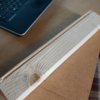Hi. I have a need to cut some 6mm wide grooves into some stud timber (not used for stud wall but for something else) and the grooves will be 6mm from each edge of the side. Some timber will be 63x38mm and some 89x38mm and the grooves will be on the wider side of the wood.
I tried to get away with this using my sliding Mitre saw (see attached picture) but it isn't accurate enough, I need to be accurate. I think my Mitre saw needs some calibration but even so, if I can get it calibrated soon I still don't think i'll be accurate enough.
So, I wanted a table saw for a while and no time like the current need so, I looked into them and then found that it's highly not recommended to cut grooves or rabbets etc using a table saw due to the risk of kickbacks and UK table saws therefore have a rive blade which sits above the blade meaning you can't do this without removing the blade, making it unsafe.
So, then I believe a router is the best option but not having used a router before or know much about them, is this the best and safest option to cut grooves and would I actually be able to make small grooves of 6mm wide and only 6mm from the edge of the timber accurately?
I tried to get away with this using my sliding Mitre saw (see attached picture) but it isn't accurate enough, I need to be accurate. I think my Mitre saw needs some calibration but even so, if I can get it calibrated soon I still don't think i'll be accurate enough.
So, I wanted a table saw for a while and no time like the current need so, I looked into them and then found that it's highly not recommended to cut grooves or rabbets etc using a table saw due to the risk of kickbacks and UK table saws therefore have a rive blade which sits above the blade meaning you can't do this without removing the blade, making it unsafe.
So, then I believe a router is the best option but not having used a router before or know much about them, is this the best and safest option to cut grooves and would I actually be able to make small grooves of 6mm wide and only 6mm from the edge of the timber accurately?


